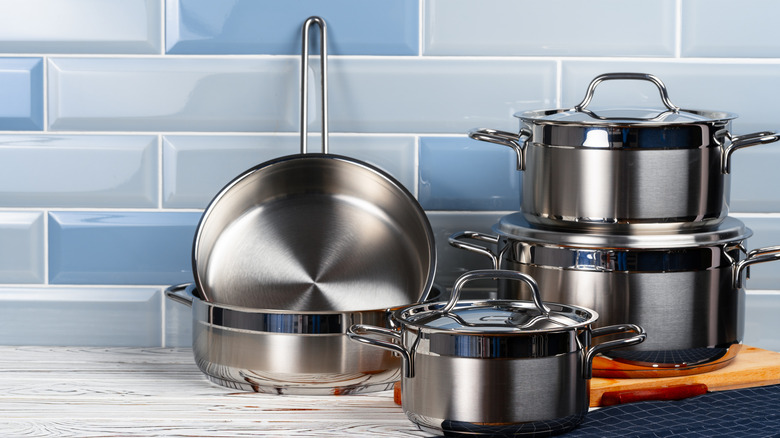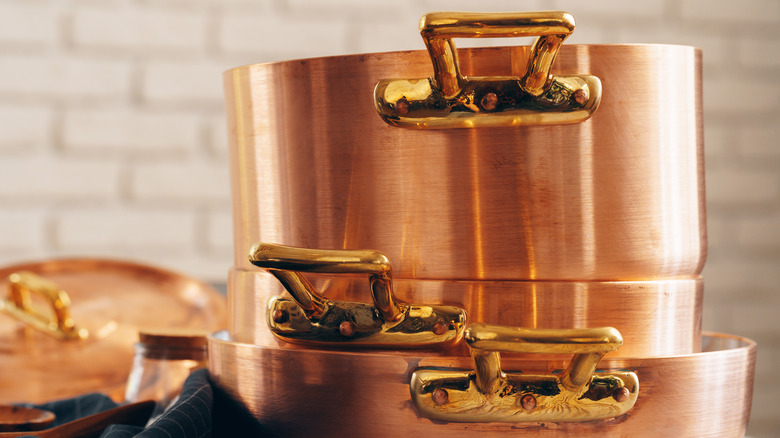The Real Difference Between Non-Reactive And Reactive Cookware
Whether you're a novice or an expert in the kitchen, you probably know that cooking with a cast iron skillet is different from cooking with a stainless steel pan. But do you know why? Without boring you with all the scientific details, here's what you need to know: some pans are considered "reactive" while others are "non-reactive." According to The Kitchn, cookware is categorized based on the type of metal it's made out of. Since you probably aren't an expert in cookware metals, we'll break it down for you: cookware with enamel coating is non-reactive. This includes stainless steel, ceramic, glass, and metal. Aluminum, copper, and cast iron, on the other hand, are reactive.
If you're cooking something that requires a lot of time on the stove or in the oven, you want to cook with non-reactive cookware because it doesn't affect your food during the cooking process. However, The Kitchn warns that these pots and pans tend to fall on the pricier side. That said, reactive pots and pans may be cheaper, but they can change the flavor and appearance of your food if you're not careful.
Reactive pots can make your food taste like chemicals
Per The Kitchn, cooking with "reactive" pots (aluminum, copper, and unseasoned cast iron) can result in your food having a subtle metallic or "tinny" flavor. The chances of this happening the very first time you use a reactive pot or pan are not likely; however, over time, it could lead to your meals tasting like chemicals. This is a direct result of cooking high acidic foods in "reactive" cookware, Cook's Illustrated points out. The acidity triggers a chemical reaction in the metal, causing the cookware to release "trace amounts of [metal] molecules," which can then blend into your food. Because these traces are so teeny tiny, you won't know it's happening until you go to eat your meal. And unfortunately, this can also happen with alkaline foods such as almonds, broccoli, green beans, sea salt, and most herbs.
At the end of the day, using a reactive pot or pan once in a while for acidic or alkaline foods is not the end of the world, especially if you're making something quick. However, it's smart to invest in some non-reactive cookware (and make sure your cast iron skillets are seasoned) for the sake of your taste buds. Be sure to pay close attention to recipes because they sometimes highlight which pans you should use!

